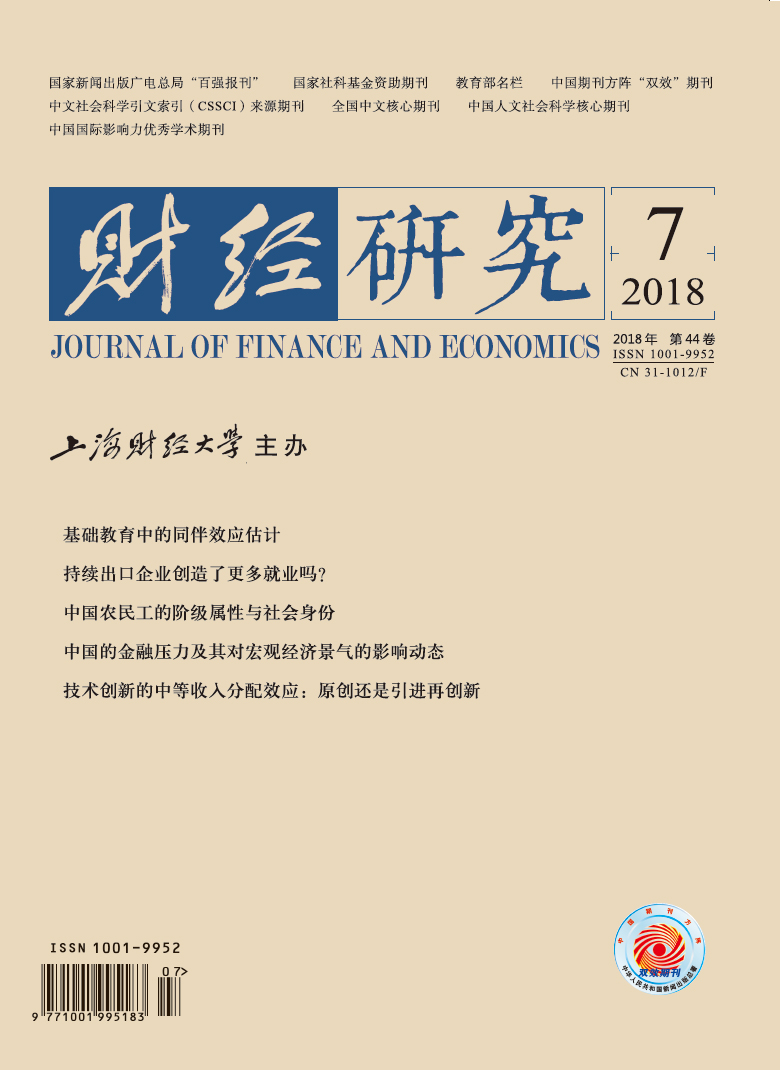文章将人口结构、财政支出结构和货币政策引入新凯恩斯动态随机一般均衡框架,重点分析了人口老龄化对我国宏观调控经济政策的影响。研究结果显示:除了人口老龄化自身对经济增长的负面影响,留给宏观调控政策的腾挪空间也越发有限−影响政策调控的有效性,增加政策实施的成本。(1)除了加重财政养老负担,人口老龄化更损害财政刺激效果和财政绩效质量,限制政府实施反周期政策的能力,压缩财政政策发挥的空间;(2)老年人主导的社会对通货膨胀的容忍度将不断下调,势必削弱货币政策刺激总需求能力,增加政策实施成本,迫使中央银行改变货币政策操作方式,可能采取更激进措施以实现相同效果,强化金融脆弱性;(3)相比增加人口生育率,提高劳动参与率既是缓解短期财政养老负担、保障养老融资可持续性的关键,也是有效增加劳动供给、改善政策发挥生态环境,进而提高财政政策与货币政策有效性的权宜之计。
人口老龄化影响财政与货币政策的有效性吗?
摘要
参考文献
1 巴曙松. 人口结构的宏观金融含义[R]. 中国金融四十人论坛报告, 2012.
15 彭文生. 渐行渐远的红利: 寻找中国新平衡[M]. 北京: 社会科学文献出版社, 2013.
17 王小鲁, 樊纲. 中国经济增长的可持续性——跨世纪的回顾与展望[M]. 北京: 经济科学出版社, 2000.
24 Andersen T M. Fiscal sustainability and fiscal policy targets[R]. ASB Economic Working Paper, 2012.
25 Aschauer D. Fiscal policy and aggregate demand[J]. American Economic Review, 1985, 75(1): 117—270.
26 Barro R. Government spending in a simple model of endogenous growth[J]. Journal of Political Economy, 1990, 98(5): 103−126. DOI:10.1086/261726
27 Bean C. Global demographic change: Some implications for central banks[R]. Bank of England Working Paper, 2004.
28 Bloom D E, Canning D, Fink G. Implications of population aging for economic growth[R]. NBER Working Paper No. 16705, 2011.
29 Borio C, Zhu H. Capital regulating, risk-taking and monetary policy: A missing link in the transmission mechanism[R]. BIS Working Papers No. 268, 2008.
30 Bruckner M, Pappa E. Fiscal expansions, unemployment, and labor force participation: Theory and evidence[J]. International Economic Review, 2012, 53(4): 1205—1228. DOI:10.1111/j.1468-2354.2012.00717.x
31 Burtless G. The impact of population aging and delayed retirement on workforce productivity[R]. Center for Retirement Research at Boston College, 2013.
33 Cipriani G P. Population aging and PAYG pensions in the OLG model[J]. Journal of Population Economics, 2014, 27(1): 251—256. DOI:10.1007/s00148-013-0465-9
35 Ewijk C. Ageing and the sustainability of Dutch public finances[R]. CPB Netherlands Bureau for Economic Policy Analysis, 2006.
36 Fujiwara I, Hara N, Hirakata N, et al. Japanese monetary policy during the collapse of the bubble economy[J]. Monetary and Economic Studies, 2007, 28(2): 89—128.
37 Fujiwara I, Teranishi Y. A dynamic new Keynesian life-cycle model: Societal aging, demographics, and monetary policy[J]. Journal of Economic Dynamics and Control, 2008, 32(8): 2398—2427. DOI:10.1016/j.jedc.2007.09.002
38 Gali J. Monetary policy, inflation,and the business cycle[M]. Princeton: Princeton University Press, 2008.
39 Gertler M. Government debt and social security in a life-cycle economy[J]. Carnegie-Rochester Conference Series on Public Policy, 1999, 50: 61—110. DOI:10.1016/S0167-2231(99)00022-6
40 Gertler M, Karadi P. A Model of Unconventional Monetary Policy[J]. Journal of Monetary Economics, 2011, 58(1): 17—34. DOI:10.1016/j.jmoneco.2010.10.004
41 Hamori S, Asako K. Government Consumption and Fiscal Policy: some evidence from Japan[J]. Applied Economic Letters, 1999, 6(9): 551—555. DOI:10.1080/135048599352583
42 Imam P A. Shock from graying: Is the demographic shift weakening monetary policy effectiveness[R]. IMF Working Paper No. 13/191, 2013.
43 Kantur Z. Aging and monetary policy[R]. Department of Economics, Bilkent University, Ankara, Turkey, 2013.
44 Kara E, von Thadden L. Interest rate effects of demographic changes in a New-Keynesian life-cycle framework[R]. ECB Working Paper No. 1273, 2010.
47 Mayer E, Moyen S, Stähler N. Government expenditures and unemployment: A DSGE perspective[R]. Deutsche Bundesbank Discussion Paper, 2010.
48 Mitchell P R, Sault J E, Wallis K F. Fiscal policy rules in macroeconomic models: Principles and practice[J]. Economic Modelling, 2000, 17(2): 171—193. DOI:10.1016/S0264-9993(99)00026-7
49 Mountford A, Uhlig H. What are the Effects of Fiscal Policy Shocks[J]. Journal of Applied Econometric, 2009, 24(6): 960—992. DOI:10.1002/jae.1079
51 Perkins D. Reforming China’s economy system[J]. Journal of Economic Literature, 1998, (2): 601—645.
52 Poterba J M. Demographic structure and asset returns[J]. Review of Economics and Statistics, 2001, 83(4): 565—584. DOI:10.1162/003465301753237650
53 Poterba J M. Population aging and financial markets[R]. NBER Working Paper, 2004.
54 Ripatti A. " A dynamic new Keynesian life-cycle model: Societal aging, demographics, and monetary policy” by Ippei Fujiwara and Yuki Teranishi. A comment[J]. Journal of Economic Dynamics and Control, 2008, 32(8): 2507—2511. DOI:10.1016/j.jedc.2007.09.005
55 Puhakka M. The effects of aging population on the sustainability of fiscal policy[R]. Bank of Finland Research Discussion Paper No. 26, 2005.
56 Schmitt-Grohé S, Uribe M. Optimal simple and implementable monetary and fiscal rules[J]. Journal of Monetary Economics, 2007, 54(6): 1702—1725. DOI:10.1016/j.jmoneco.2006.07.002
58 Woodford M. Interest and prices: Foundations of a theory of monetary policy[M]. Princeton: Princeton University Press, 2003.
59 Yoshino N, Miyamoto H. Decreased effectiveness of fiscal and monetary policies in Japan’s aging society[R]. ADBI Working Paper, 2017.
引用本文
李建强, 张淑翠. 人口老龄化影响财政与货币政策的有效性吗?[J]. 财经研究, 2018, 44(7): 16-32.
导出参考文献,格式为:
上一篇:家庭教育支出存在邻里效应吗?
下一篇:产业政策、信贷配置与创新效率





 8121
8121  11881
11881

